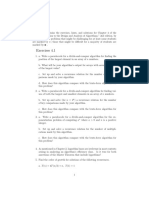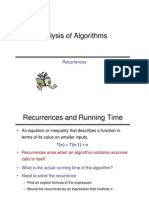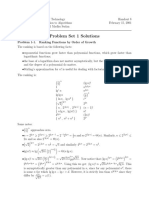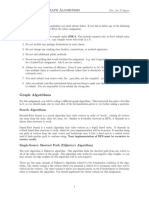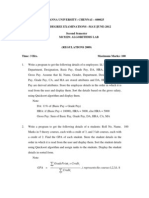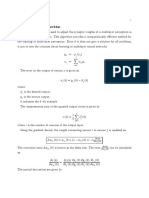0% found this document useful (0 votes)
14 views9 pages04 Class
The document discusses the divide-and-conquer approach to solving problems, particularly focusing on the maximum-subarray problem and Strassen's algorithm for matrix multiplication. It outlines the process of dividing problems into smaller subproblems, solving them, and combining the results, along with the time complexity associated with these algorithms. Additionally, it introduces the substitution method for analyzing recurrences and provides examples to illustrate these concepts.
Uploaded by
KevinCopyright
© © All Rights Reserved
We take content rights seriously. If you suspect this is your content, claim it here.
Available Formats
Download as PDF, TXT or read online on Scribd
0% found this document useful (0 votes)
14 views9 pages04 Class
The document discusses the divide-and-conquer approach to solving problems, particularly focusing on the maximum-subarray problem and Strassen's algorithm for matrix multiplication. It outlines the process of dividing problems into smaller subproblems, solving them, and combining the results, along with the time complexity associated with these algorithms. Additionally, it introduces the substitution method for analyzing recurrences and provides examples to illustrate these concepts.
Uploaded by
KevinCopyright
© © All Rights Reserved
We take content rights seriously. If you suspect this is your content, claim it here.
Available Formats
Download as PDF, TXT or read online on Scribd
/ 9






























